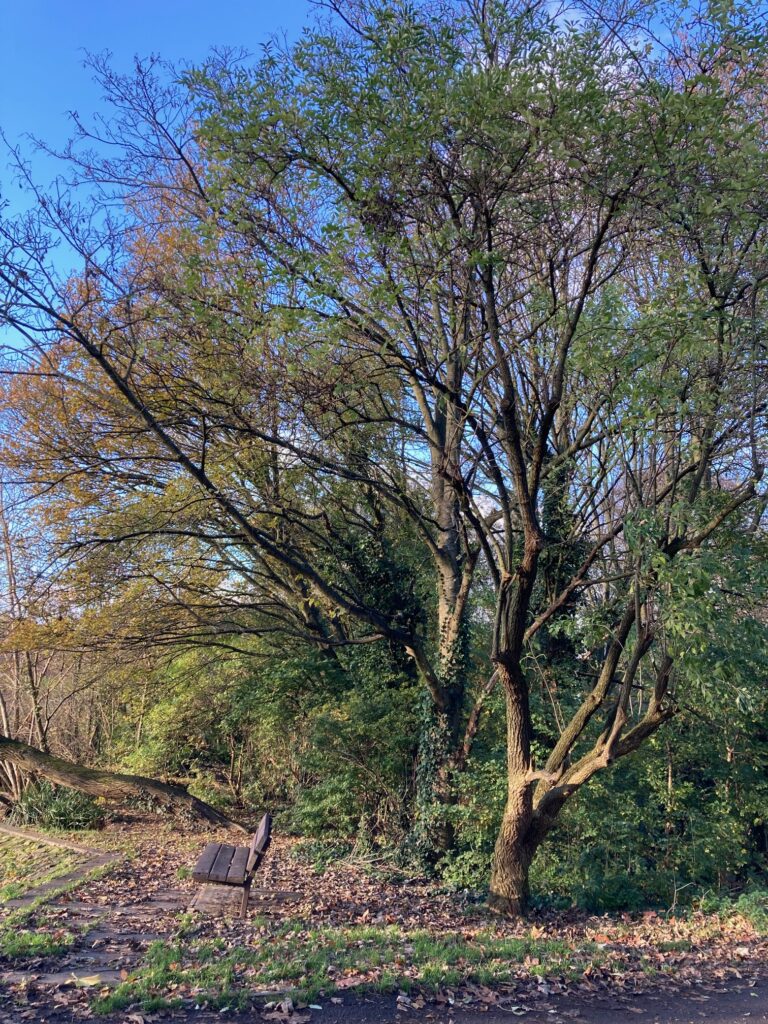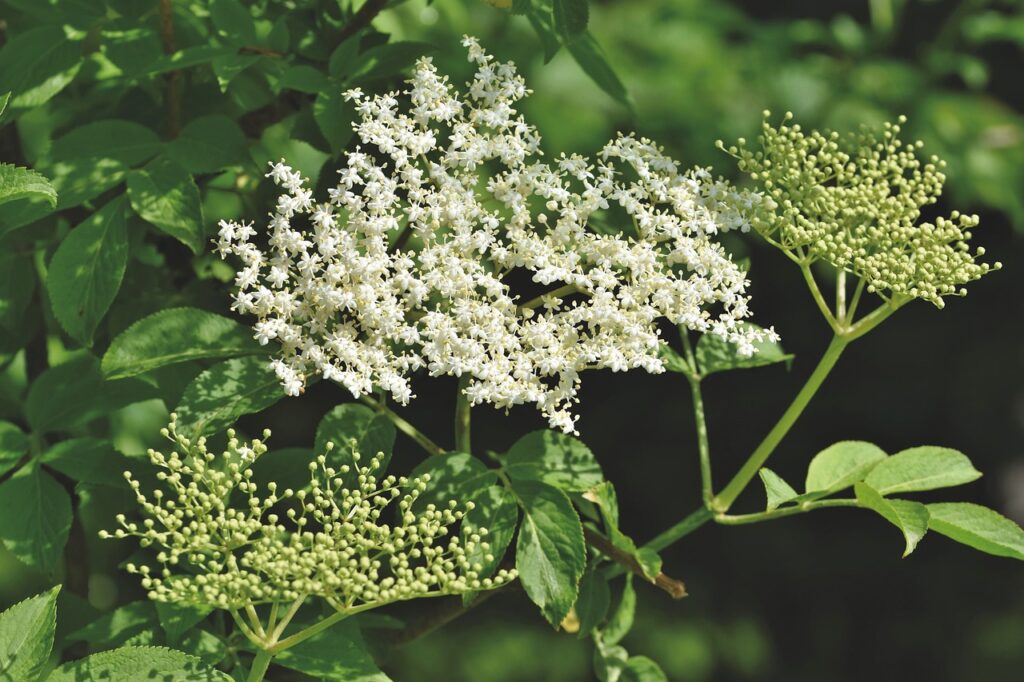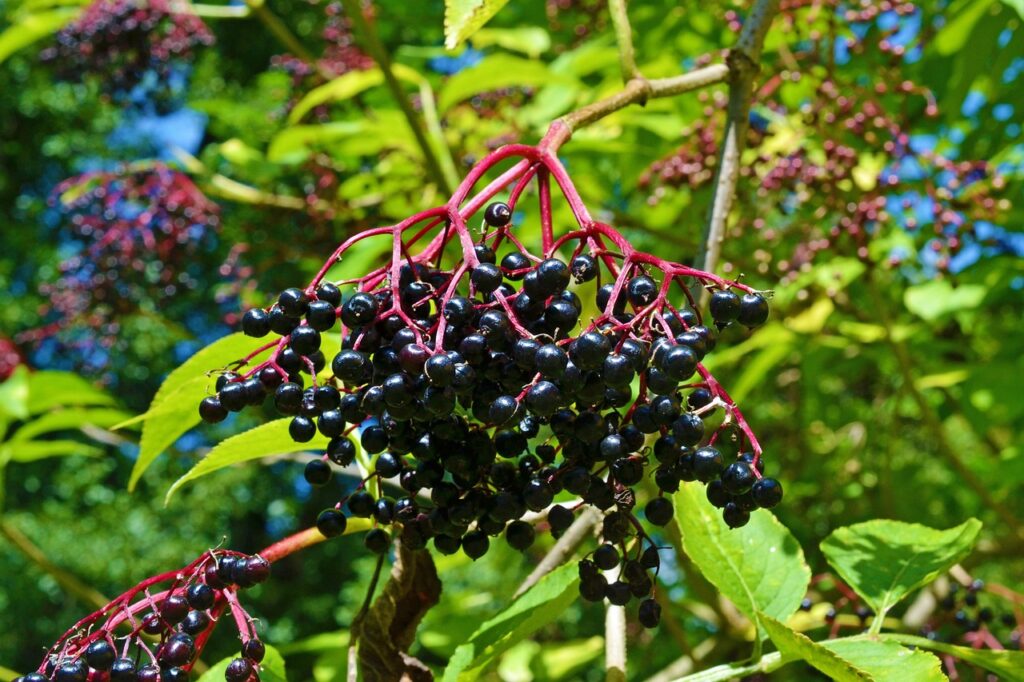What3Words reference: things.economies.stops
Location notes: by the seat on the river inlet.
Most people know elder trees by their white fragrant flowers or deep purple bunches of small fruits. The other distinguishing feature is a rather unpleasant smell from the leaves and twigs when touched or bruised. Perhaps it was this that gave the elder tree a connection with the Devil. Burning the wood was thought to bring on sight of the Devil but planting one by the door kept evil away. More practically bunches of leaves were often hung in dairies to keep flies away.
Mature trees can live for about 60 years and reach around 15m. There are many in Riverside Park but this example is easy to find. The leaves are arranged symmetrically along the stem (pinnate) with 5 or 7 leaflets with slightly serrated edges.
Tiny creamy white flowers with five petals are produced in large clusters called umbrals from 10 to 30cm across and appear in late May. Once these are pollinated, they produce the tart berries in late summer and early autumn when the leaves start to turn a beautiful shade of red. Curiously elders are hermaphrodite, meaning the male and female reproductive parts are contained within the same flower.
Elders are widespread in the UK in woodland, waste land and hedgerows and often found near rabbit or badger setts. The animals distribute seed via droppings, which certainly applies to this area of the park.
Some small mammals such as dormice and bank voles eat both berries and flowers, while the berries are food for birds. The foliage is food for several varieties of moth caterpillars such as white-spotted pug, swallowtail, dot moth and buff ermine. The flowers can be very attractive to blackfly which in turn can feed ladybirds, lacewings and hoverflies.
The mature wood is good for whittling and carving. The flowers are often used to make a syrup or cordial or fried as fritters. The berries are vitamin C-rich and can be added to blackberries in a pie or made into country wine. All parts of the tree have been used to produce dye especially blue in Harris Tweed, but also purple, yellow, green, black and grey. Note that uncooked berries are poisonous, as can be other Sambucus plants.



